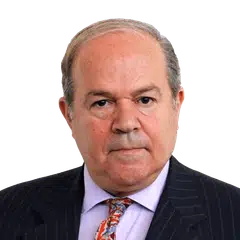News analysis
A reformer and a reconciler: What Pope Leo’s new reign might bring
Sign up now: Get ST's newsletters delivered to your inbox

Newly elected Pope Leo XIV – Cardinal Robert Prevost of the US – appearing on the balcony of St Peter’s Basilica at the Vatican on May 9 Singapore time.
PHOTO: AFP
Follow topic:
LONDON – From the moment Pope Francis passed away,
Most observers predicted a long-drawn-out battle between well-known candidates, made even more complex because the conclave – the Pope’s electoral body – was the largest ever, with no fewer than 133 cardinals from every far-flung corner of the world entitled to vote.
In the event, the conclave lived up to its history of producing surprises.
Far from being locked in interminable disputes, the cardinals needed fewer than two days of deliberations and only four rounds of voting to agree on a successor – a shorter process than the election of Pope Francis back in 2013, which came after five voting rounds.
But the bigger surprise is that none of those considered initially front runners made it; instead, and for the first time, the new pope is a United States-born prelate, the 69-year-old Robert Prevost, who will reign as Pope Leo XIV.
The choice is clearly a compromise. Pope Leo is regarded as a reformer, very much in the mould of his predecessor.
Yet he is also likely to take a less abrasive and confrontational line than the late Pope Francis, and seek reconciliation with the traditionalist wing of the Church.
Interpreting the politics of the Vatican is an art, not a science; much depends on deciphering trends by piecing together bits of seemingly unrelated information.
However, in the case of the new pope, his reforming tendencies are pretty evident.
The Chicago native spent most of his adult life as a missionary in Latin America.
He was clearly a favourite of Pope Francis, who swiftly elevated him to the rank of bishop, and then continued conferring on him top positions.
And Cardinal Prevost’s last position before his accession to the papal throne was that of evaluating and recommending who should be appointed to the highest ranks of the Catholic Church, arguably one of the most powerful jobs in the Vatican.
Only those who agreed completely and uncritically with Pope Francis could have experienced such fast promotions.
Cardinal Prevost’s decision to take up the name of Leo XIV is also a subtle hint at his reforming tendencies.
The last pope to be called Leo was an Italian prelate who became head of the Catholic Church in 1878 at almost the same age as the current Leo.
And like the current pope, Leo XIII ascended to the papal throne at a time of rapid industrialisation and technological change, trends he embraced wholeheartedly at a time when most of the Catholic Church viewed technological and social progress as a menace.
The Leo of the 19th century is remembered for steering the Catholic Church towards promoting social justice. He established soup kitchens for the poor and shelters for the homeless.
He viewed technological inventions as an opportunity rather than a threat to the Church and morality.
Leo XIII was the first pope to have his voice recorded on audio tape, and to have his movements immortalised on film.
And, perhaps just as significantly, the 19th century Leo established the Catholic University of America in Washington, DC, North America’s most distinguished institution of Catholic religious learning.
It is clear why the current pope regards the name of Leo as an inspiration to follow.
Yet, at the same time, the new pope has also offered early hints that he intends to respect old, established Church traditions, unlike the late Pope Francis.
In 2013, at his first public appearance after his election, Pope Francis refused to wear the fur-trimmed red velvet mozzetta, a short cape traditionally worn by popes, or the red shoes usually sported by a new pope.
But the new pope reverted to the old attire, a tiny gesture of reconciliation with traditionalists, yet one that all Church officials surely noted.
Only time can tell what foreign policies the new papacy may support.
However, it is clear that, given his experience, Pope Leo XIV will maintain his interest in both North and Latin America; few can be more familiar than he with the epic confrontations between traditionalists and reformers in the Western hemisphere.
One of the key challenges facing the new papacy will be its policy on China.
The Vatican’s 2018 agreement with China to share power with Beijing in the appointment of Catholic bishops is defended by its originators as the only way of safeguarding the rights of Catholic believers in the Communist-ruled country.
However, critics have argued that the deal seriously compromises papal religious and moral authority.
The chief architect of the China deal was Cardinal Pietro Parolin, the Vatican’s Secretary of State, who heads all the Holy See’s political and diplomatic functions.
Cardinal Parolin was also considered a front runner to become pope, and some Chinese officials dropped heavy hints that his elevation to the papacy would be viewed very favourably in Beijing.
Yet now that Cardinal Parolin has failed to be elected, it remains to be seen whether he will continue to exercise the same role and influence over the new pope.
But if the Chinese are disappointed, US President Donald Trump can at least claim some satisfaction.
Just before the latest conclave started, Mr Trump circulated a mock photograph of himself dressed as the new pope.
The prank, dismissed by the US President as just a joke, outraged many Catholic believers.
Mr Trump duly failed to become a pope.
But fate did grant his other wish: The new pope is an American.
“It is such an honour to realise that he is the first American pope,” the President wrote on Truth Social.
Jonathan Eyal is based in London and Brussels and writes on global political and security matters.


